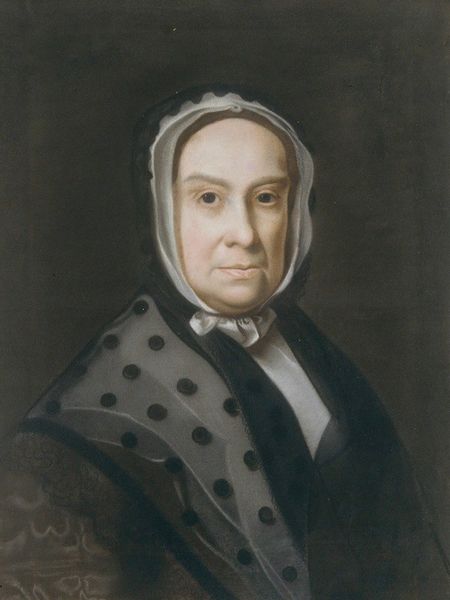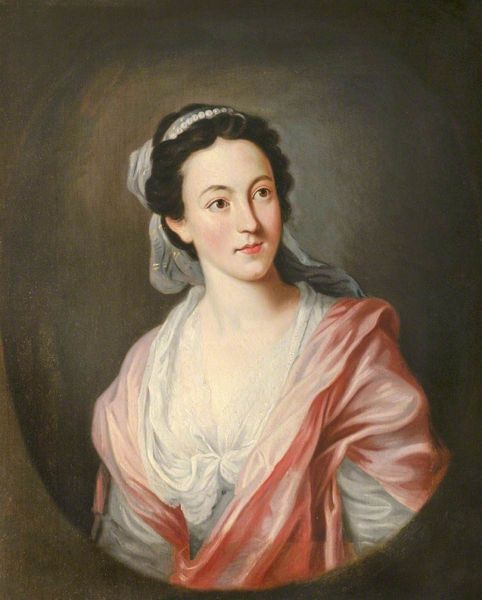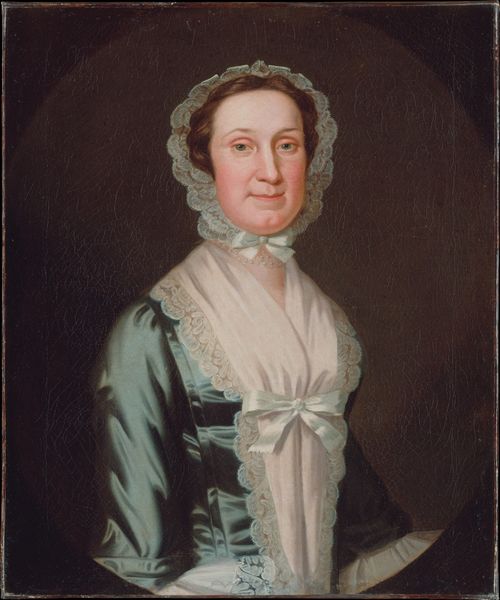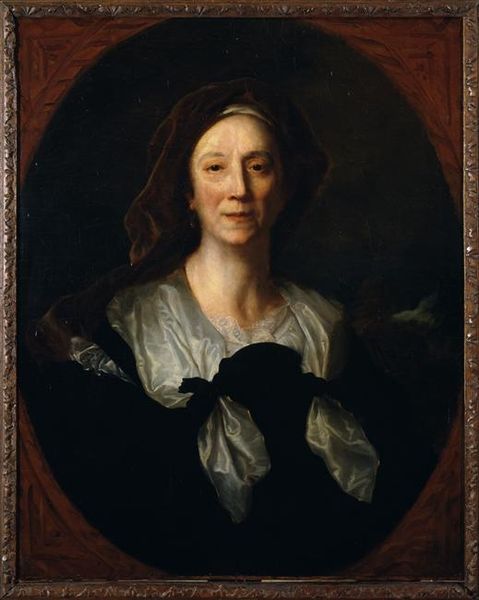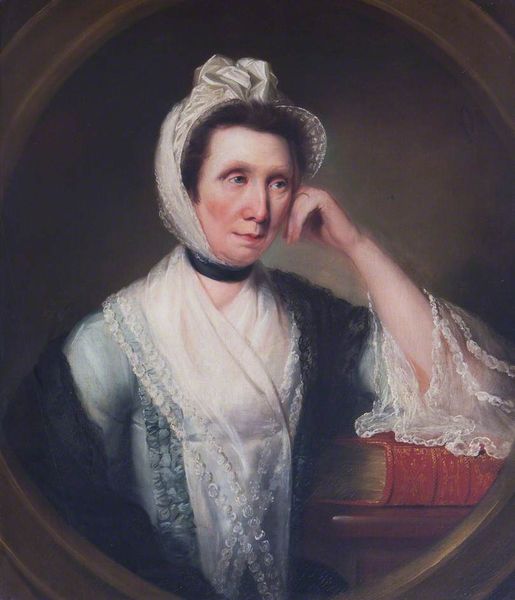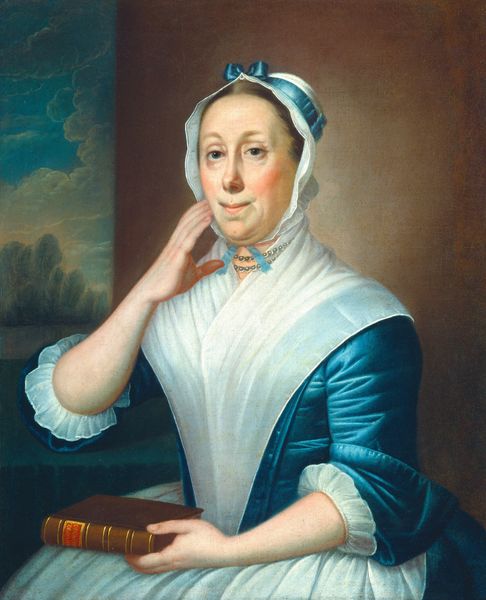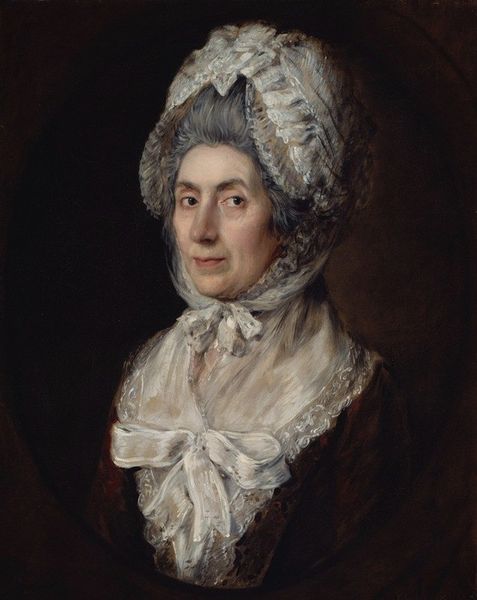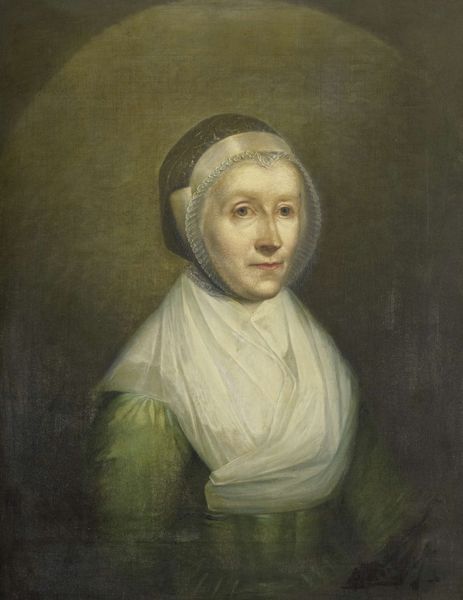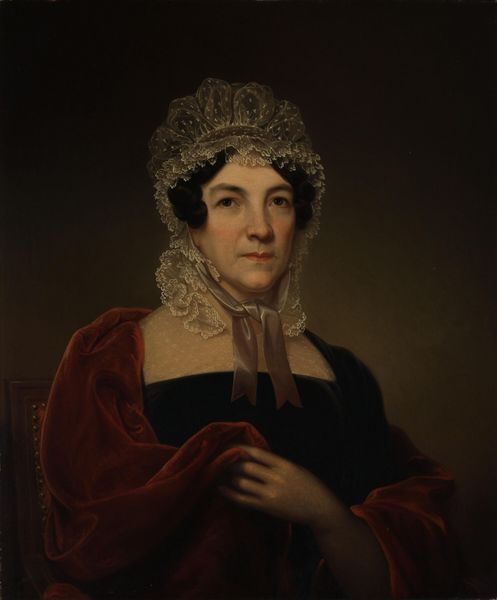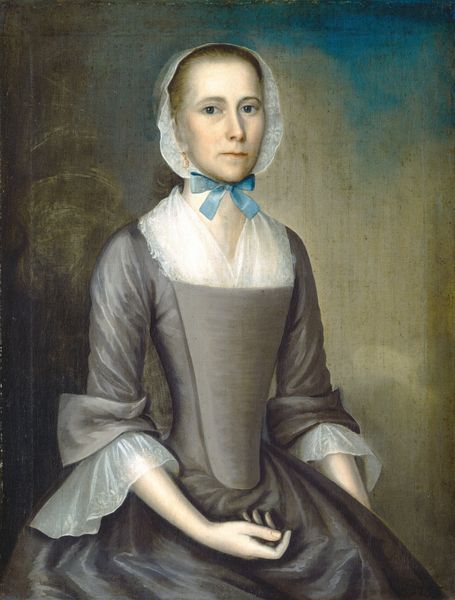
painting, oil-paint
#
portrait
#
portrait
#
painting
#
oil-paint
#
figuration
#
history-painting
#
rococo
Copyright: Public domain
Editor: Here we have George Romney's 1760 oil painting, "Mary Rawlinson." It feels like a very personal and direct portrait. What historical context might illuminate this image for us? Curator: It's important to consider the social and artistic context in which Romney was working. This piece comes at a time when portraiture was increasingly used to project a certain status or image for the sitter. What can you tell me about the symbolism in Mary Rawlinson’s clothes? Editor: Her white cap and modest dress... It suggests humility and perhaps domesticity? Not really aligning with the grandeur you see in other portraits. Curator: Precisely. Think about the social forces shaping the reception of portraiture during the mid-18th century. Romney was vying for recognition amongst established artists, while his patrons, people like Mary Rawlinson, played a crucial role in his success. How do you feel this informs your view of the painting now? Editor: So, it's not just a personal image but a constructed one responding to a specific socio-economic environment and to promote Romney at the same time? Almost like... social media marketing of the era! Curator: Exactly. By de-emphasizing overt displays of wealth and power, the painting perhaps catered to a growing market of patrons who desired portraits that emphasized virtue. In turn, this enabled Romney to showcase his ability to capture emotion in simplicity. Editor: This has really broadened my understanding of portraiture’s public function beyond just capturing a likeness. Thank you. Curator: My pleasure. Reflecting on this piece, I'm struck by the evolving relationship between artists, patrons, and the art market.
Comments
No comments
Be the first to comment and join the conversation on the ultimate creative platform.


